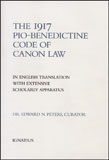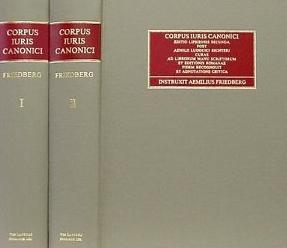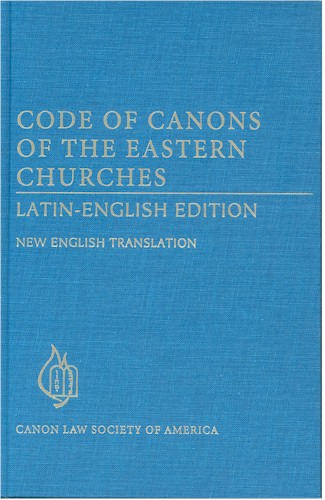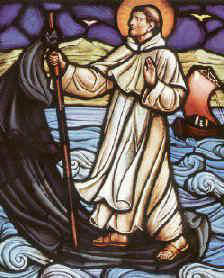|
To work for the proper implementation of canon law is to play an extraordinarily constructive role in continuing the redemptive mission of Christ. Pope John Paul II |
|
|
|
|
Resolution 1152 x 864 |
Updated 3 jan 2013 |
The coming bishop crunch |
|
Edward Peters, "The coming bishop crunch", Homiletic & Pastoral Review (Nov 1995) 15-19.
Karl Keating, Esq. of Catholic Answers had on the bishop crunch |
Since this short article first appeared, I have been asked for copies many times, but cross-country moves and several computer system changes made that impossible. What follows is the original article very kindly transcribed by Richard Chonak. I thought it best to release it here just as it appeared, even though, obviously, some of the predictions have not "come true". (Most of the predictions that did not "come true", did not precisely for the reasons I suggested they might not, primarily, acceleration of open sees). Moreover, the stop gap remedy of simply ignoring Canon 401 is in full use today; its formalization is being debated by advisors to the pope as we speak. In any case, the underlying problems outlined in my 1995 article are plainly still with us, and most of the suggestions for dealing with the bishop crunch are still available. What the Holy Spirit wants to do with all this, we shall see.
|
|
|
In 2006, less than 11 years from now, the United States will need to replace 5 archbishops and 10 diocesan bishops. The archdioceses of Baltimore MD, Boston MA, Kansas City KS, Louisville KY, and Mobile AL, shepherding nearly 3,000,000 Catholics, will become vacant that year when their archbishops reach the canonical retirement age of 75 (1983 CIC 401).
That same year, the bishops of Cheyenne WY, Colorado Springs CO, Crookston MN, Dallas TX, Galveston-Houston TX, Joliet IL, Marquette MI, San Jose CA, Shreveport LA, and Wichita KS will also reach retirement, leaving another 2,250,000 Catholics to await word on the new heads of their dioceses. Add to these all of the Catholics living in the 22 suffragan sees which fall under the five archdioceses,1 and it's easy to see how some 7,000,000 Latin-rite Catholics in 19 states from coast to coast will have good reason to pray for extra blessings in 2006.
Not that 2006 is going to be a unique year in the life of the Church in the United States. In the preceding year, 2005, two archdioceses (Detroit MI and Newark NJ) and 13 dioceses will come open. In the following year, 2007, three archdioceses (Denver CO, Omaha NE, and Seattle WA) and 12 dioceses will come vacant. While few of the next twenty years look light in terms of episcopal turn-over, I think the years 2005-2007 could qualify as genuine episcopal "Crunch Years."2
The question I want to consider now is simple: during just the three years from 2005 to 2007, where will we find 45 men "outstanding for their solid faith, good morals, piety, zeal for souls, wisdom, prudence and other virtues and talents, possessing advanced degrees or true expertise in scripture, theology, canon law..." (1983 CIC 378) to fill those episcopal slots? If only for mathematical reasons, we can't count on the present pool of bishops to cover the bases.
Of the roughly 260 active bishops in America right now, at least 165 will retire by 2007. And, in so far as the Holy See tries to avoid putting in a short-termer as a diocesan, let alone archdiocesan, bishop, one can prudently discount up to 53 more who are scheduled to retire within three to five years of 2007. That leaves, then, scarcely 45 present-day bishops (25 of whom already head archdioceses or dioceses) to fill the 45 places which will open between 2005-2007. However, to count on even that, one would have to assume that none of the 45 potentially available current bishops are taken for the 108 archdioceses and dioceses which will come open between now and 2005, and that no openings now scheduled for the Crunch Years of 2005-2007 are accelerated by death, resignation, or transfer. This is beginning to sound serious.
Before going any further, though, let's recall that mathematical projections are notoriously dangerous things: In 1910, for example, panic briefly gripped New York City when a transportation study predicted that by 1960, if then-present trends continued, the Big Apple would be buried under 3 feet of horse manure. Ecclesiastical conditions change too, of course, and, in the end this is all in the Holy Spirit's hands anyway. Still, there seems at least some reason to be concerned. From the above, I suggest that the great majority of the sees opening from 2005-2007 will be filled by men who are not even bishops yet, that is, mostly by men who are presently diocesan priests. A few observations on these American "episcopabili", therefore, seem in order.
Although the canonical minimum age for bishops is 35 (1983 CIC 378, n.1), very few men are named bishops these days who are not already 45, often older.3 Therefore, the episcopal classes of 2005-2007, right now, consist mainly of priests in their early to mid-30s, perhaps a little older. As such, they have virtually no personal memories of Vatican II. They perceived none of the drama surrounding Humanae vitae or, for that matter, the Call to Action a few years later. Most of them can't tell you where they were when Kennedy was shot. Moreover, given the gradually advancing age of seminarians, most of the Crunch Years' bishops have, as of now, even been ordained for only five or six years, only a few as many as 10.
If they are east coast priests, especially in the larger cities, they are probably still best known as "that nice new associate, oh, you know, Fr. What's-his-name." They will be in a parish for only a couple of years before being transferred across town to another to see what another part of the Church is like, or at least to see what another pastor is like. If they are midwestern or western priests, especially in less populated regions, they might already be pastor of two parishes separated by many miles, wondering whether special permission would be needed to say more than three Masses on Sundays. In brief, a significant portion of our national ecclesiastical leaders-to-be in just 11 short years are, today, nearly anonymous shuffled associates or over-stretched circuit riders seriously courting burn-out.
Educationally, most Crunch Years' bishops will have studied theology in the mid- to late 1980s. While indications are that seminary life settled down somewhat by that time, at least compared to the 1970s, there will still be very serious gaps in their academic formation, gaps which, if unaddressed, will negatively affect their performance in office. How many priests now in their mid-30s can give a cogent homily on natural law, divorce, and contraception? How many American bishops in 2006 will be able to read Latin?
Since Vatican II, the Holy See has filled some of the gaps in diocesan leadership by tapping religious orders. Currently, some 35 active American bishops are members of religious orders.4 But the vocation crisis is damaging religious life as well as diocesan. Of the dwindling number of men entering religious life in the first place, fewer still will be exposed to "religious parishes" as many orders continue to pull out of parish work in favor of their own, mainly educational, apostolates. In brief, the religious reservoir is shrinking, making the need to work with the traditional source of bishops, diocesan presbyterates, even more acute.
If to this point I have suggested some potential problems, and if readers more knowledgeable than I about these things can't simply say, "Look, Peters, you left out such-and-such which will remedy this whole thing," then I'd like to turn to some preliminary thoughts on addressing the situation.
First, if there really are too many episcopal openings for too few qualified candidates, then reduce the number of openings. Just as parishes have a life span, so do dioceses. Surely there are some contiguous dioceses which, on their own, are barely surviving but which, if merged with each other, would be on much more stable footing.5 Each time that is done, the need to find two good bishops is reduced to the need to find just one.
At the same time, the number of auxiliary bishops should be reduced. The place of the auxiliary bishop has always presented certain ecclesiological anomalies and recent conciliar and canonical reforms6 have further reduced the traditionally perceived need for auxiliaries, and hence the considerable talents used in replacing them as well.
For that matter, the Holy See could consider some foreign priests for American episcopal sees.7 Obviously this would require some specialized preparations, but the history of the Church in America should suffice to demonstrate no insurmountable obstacles here.
Next, current archbishops and bishops might cushion the approaching leadership crunch by recognizing the fact that the Church in the United States is in a spiritual rebuilding, reorganizing mode such as it has never experienced before. Specifically, it is the cross of today's bishop that, as crisis after crisis assaults him and his people, he will have fewer and fewer good priests with which to respond. Bishops should nevertheless look out among their diminished presbyterates and identify those few outstanding young priests with genuine episcopal service potential. Then, without fanfare, they should, as it were, be mentally written out of the future of their own diocesan presbyterate, despite the undeniable cost, and prepared for episcopal eligibility.8
This means, among other things, making sure that these priests get licentiates, preferably doctorates, in one, preferably two, sacred disciplines from high quality institutions. Advanced academic work in a secular discipline (history, law, hard sciences, etc.) should also be encouraged for the sake of the whole college of bishops which will have an even greater need for such personal expertise in its ranks during the next century than it does already.
Pastorally, associate shuffling should be reduced. Most young priests simply aren't in one place long enough to see how parish life – which is usually family life – really goes. Can they not be left in one parish for at least six to eight years?
That's long enough to see a marriage they officiated at with serious misgivings collapse 6 years and two kids later. That's long enough to see a drug-addicted or pregnant teenager and yet remember that same human wreck as a happy kid at First Communion. That's long enough to see complete turnovers in various parish councils, maybe even parish staffs.
For those priests already in diocesan or administrative work, they should be allowed to remain there long enough to see that problems dealt with correctly the first time bear fruit for many years, but how the sloppy treatment of thorny issues will only return to haunt them and their successors for even longer periods.
If this educational regime and work experience schedule sounds demanding, so be it. It's nothing compared to the demands these young priests will face later as archdiocesan and diocesan bishops. And, if it happens that a priest given over for this thorough preparation is not called to episcopal service after all, he could hardly fail to apply his sharpened talents for the good of his own diocese.
Finally, if one read only the canonical provisions on the laity's role in the proposal of priests for the episcopate, one might conclude that laity have little voice in the bishop selection process.9 While this is not the place to comment on some of the more problematic proposals for increasing the lay voice in episcopal selections, I would simply note that Canon 212 § 3 provides all the basis one needs to "express an opinion on a matter which affects the good of the Church." A short, factual, reasonable letter to the pro-nuncio about a particular priest might be all it takes to prompt an appropriate inquiry.
The remark earlier that this whole situation is, in the end, in the Holy Spirit's hands is true, of course. Christ always provides for the needs of his Church. Still, we are invited to cooperate in that divine provision by perceiving future needs, planning to meet them, and praying for happy results. If this paper advances any of these goals, I shall be satisfied. +++
|
|
Notes
|
[1] The archdiocese of Baltimore oversees the dioceses of Arlington VA, Richmond VA, Wheeling-Charleston WV, and Wilmington DE; Boston oversees Burlington VT, Fall River MA, Manchester NH, Portland ME, Springfield MA, and Worcester MA; Kansas City oversees Dodge City KS, Salina KS, and Wichita KS; Louisville oversees Covington KY, Knoxville TN, Lexington KY, Memphis TN, Nashville TN, and Owensboro KY; and Mobile oversees Birmingham AL, Biloxi MS, and Jackson MS. The narrow canonical descriptions of the powers of archbishops which are contained in 1983 CIC 435-438 do not do justice to the significant influence that metropolitans actually exert over their provinces.
[2] During these same three years, 12 auxiliary bishops will also reach retirement, but as that raises a different aspect of the issue, it is discussed below. The Vatican's need for additional American bishops in Roman posts should also not be forgotten.
[3] The episcopal class of 1983 was, for a while, dubbed the "Baby Bishops" with Apuron (Agana), Brom (Duluth), Keating (Arlington), Levada (aux. Los Angeles), Maida (Green Bay), and Sheehan (Lubbock) cited by some as examples of the Holy See's new commitment to youth. The average age of these men in 1983 was 46. Of the 20 priests who were first appointed to the episcopate in 1983, the youngest was Gregory (aux. Chicago, 36) and the oldest was Popp (aux. San Antonio, 66). The average age of priests first appointed bishops in 1983 was 50.
[4] The archdioceses of Dubuque IA, Indianapolis IN, Louisville KY, and Milwaukee WI are currently headed by religious, as are the dioceses of Brownsville TX, Des Moines IA, Duluth MN, Fairbanks AK, Fall River MA, Gallup NM, Las Cruces NM, Memphis TN, Orlando FL, Portland ME, Rapid City SD, St. Cloud MN, San Angelo TX, and Yakima WA.
[5] Final decisions here are entirely Rome's (1983 CIC 373) although that would not preclude regional studies of such situations (see, e.g., 1983 CIC 431 and 447).
[6] An example here is the facilitation of presbyteral administration of confirmation (1983 CIC 882-884). I would also point out the generally expanded role which qualified clergy and laity can serve in diocesan administration, thereby freeing bishops to concentrate more on ministerial, rather than administerial, roles. Note, though, that Christus Dominus Nos. 25-26 as well as 1983 CIC 403 can be fairly read as encouraging greater use of auxiliary bishops. Nevertheless, and without contradicting the suggestion I just made on reducing the number of dioceses, I think more consideration should be given to dividing some of the American mega-sees now using numerous auxiliary bishops into several smaller dioceses. How is the concept and charism of diocesan bishop served by his being surrounded by four, six, or eight auxiliary bishops?
[7] At the installation of a religious bishop to a diocesan see, a presiding metropolitan complained about the Holy See filling his province with religious bishops. One wonders how the archbishop would react to the Holy See filling his province with Poles, Nigerians, and Kenyans.
[8] The final selection of any candidate, however qualified, always remains with the Holy See (1983 CIC 378 § 2 and 1382).
[9] See 1983 CIC 377 according to which canon, if strictly read, the pro-nuncio may solicit the opinions of laity on episcopal nominations only if the priests under consideration were proposed in a provincial ternus, and even then only if the laity to be consulted are "outstanding for their wisdom."
|




